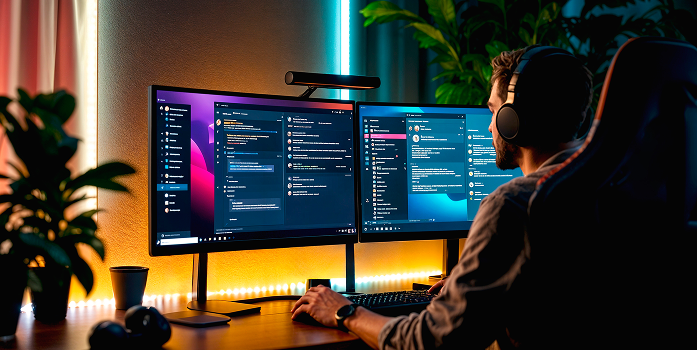How Much Does It Cost to Develop a Healthcare Mobile App
- May 20, 2025
-
1948 Views
- by Ishan Vyas
Table of Contents
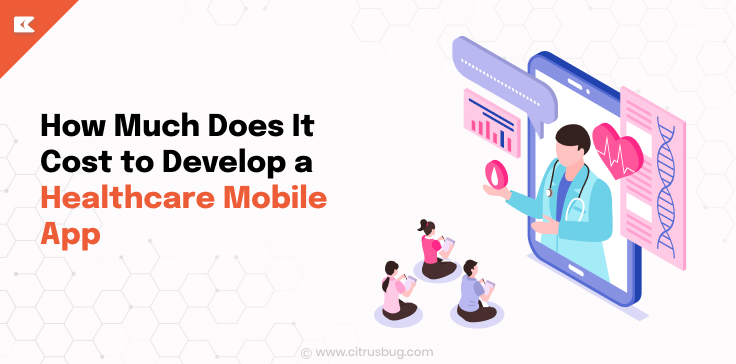
The digital transformation in healthcare is progressing at an astonishing rate. As noted in Statista’s market research, global mobile health (mHealth) revenue is expected to reach $250 billion by 2030. This growth is motivated by the continuous need for remote healthcare, advanced technologies, and rapid AI progress in the Healthcare sector.
Mobile applications are transforming care delivery from telemedicine to complicated chronic disease management towards a more accessible, individualized, and real-time format. Healthcare providers are reaping not just cost benefits but improved outcomes due to integrating AI diagnostics, chatbots, predictive analytics, and other advanced technologies into healthcare platforms.
However, with these dynamic changes, there is a burning question that many startups, clinics, and even huge hospitals are trying to tackle: How much does it actually cost to develop a healthcare mobile app?
The answer might not be straightforward. The cost of developing a healthcare app is an intricate process that depends on the app’s type and features, regulatory requisites, the targeted platform, as well as the capabilities of the chosen healthcare app development company.
Why Invest in a Healthcare Mobile App?
The change from traditional healthcare systems to adopting modern healthcare technologies is not just a trend, but it is a complete transformation. With the use of advanced mobile healthcare applications, hospitals and clinics, as well as new startups, are better able to streamline their workflows, improve healthcare access, and tailor services to individual needs. The integration of AI technologies into healthcare applications is enabling the transformation of these mobile applications into smart healthcare ecosystems, which optimize value for both providers of healthcare services and their patients.
Healthcare apps assist with a variety of functions, such as:
- Scheduling and managing appointments
- Telemedicine and secure video consultations
- Remote chronic care management
- Access to Electronic Medical Records (EMR)
- AI-enabled symptom checkers with virtual health assistants
- Predictive analytics and early disease detection
The integration of AI in healthcare mobile applications improves real-time chat-based communication, triage, and the provision of custom-tailored treatment plans, all of which are rooted in patient data. As a result, an individual can monitor their health and receive timely interventional care while providers experience decreased no-show rates, better workload management, and advanced warning for critical cases.
AI mHealth apps help solve specific problems in the healthcare ecosystem, particularly those related to unmet needs for mental health support or post-discharge monitoring, allowing innovative startups to design precise, streamlined, and scalable solutions.
By custom-developing healthcare applications, an organization’s procedures and policies, as well as their compliance with regulatory bodies, such as HIPAA, HL7, and FHIR, are adhered to. This is critical when incorporating AI capabilities that manipulate sensitive health data. With time, these intelligent applications lead to increasing patient engagement and better outcomes, while also providing a tangible return on investment for the healthcare providers.
Types of Healthcare Mobile Apps
The integration of AI into mobile healthcare applications allows for real-time insights, personalized recommendations, and even predictive analytics. For AI-enabled mobile health applications, the complexity and features directly affect the development costs, so it’s critical to know the categories of mobile health apps.
Here are the most common types of healthcare mobile apps in the market today:
1. Telemedicine Apps
With the help of telemedicine applications, patients can have chats or video sessions with their doctors. The adoption of telehealth has skyrocketed since the onset of the COVID-19 pandemic. Now, AI can automate many processes, including patient symptom checks and voice-to-text consultations during the sessions.
2. Appointment Scheduling Apps
These applications provide users with convenient access to a doctor’s availability. AI can enhance appointment scheduling by predicting busy times, auto-filling patient preferences, and sending smart reminders. These functions improve clinic efficiency and reduce no-shows.
3. Remote Patient Monitoring (RPM) Apps
Through these apps, users can track their heart rates, glucose levels, and even blood pressure using either wearable devices or through manual data entry. AI augments RPM by analyzing the data in real time, issuing alerts for inconsistencies, and predictive guidance for chronic care measures in case management and early intervention.
4. Electronic Health Record (EHR/EMR) Apps
EHR applications give both physicians and patients secure access to their health records at any time, enhancing the convenience of managing their information. With AI, EHR apps provide advanced patient history summarization, NLP documentation, and smart decision support for diagnoses and treatment.
5. Fitness and Wellness Apps
These apps deal with mental health, diet, physical activity, and sleep. With the integration of AI into fitness & wellness apps, personalized fitness routines can be created, monitoring of moods based on behaviours can be recorded, and even chatbot-based CBT for stress and anxiety tailored to the individual’s needs can be administered, this contributes to comprehensive health improvement.
Key Features That Influence the Cost to Develop a Healthcare Mobile App
The latest developments in mobile healthcare applications are shifting from being passive interfaces to integrating advanced AI technologies like predictive analytics to facilitate smart, tailored care. The overall cost of developing a mobile healthcare app is deeply shaped by the selected features of the app, particularly those that revolve around AI and large-scale data analysis.
Here are the most critical AI capabilities that determine the scope and budget of development for healthcare applications.
1. AI-Powered Symptom Checker & Smart Triage
Symptom checkers have machine learning capabilities that evaluate user symptoms against a medical database and suggest possible conditions or guide users towards appropriate healthcare services. Though these apps make it easier to access care, the datasets that require intensive algorithm training and medical validation increase the burden on clinical staff which in turn hampers the development budget.
2. Predictive Analytics for Proactive Health Monitoring
AI algorithms analyze and proactively assess the chronic conditions of existing patients with hypertension, diabetes, and others using their electronic health records, lifestyle data, and metrics from wearable devices. These capabilities are particularly useful in value-based healthcare where preventative treatment is prioritized. The implementation of such tools necessitates additional data science resources which raises budgeting concerns.
3. NLP for Voice Commands, Transcription & Summarization
NLP technology facilitates voice-command guided navigation, automated transcription during medical consultations, and AI-generated summaries of consultations. While NLP saves time and diminishes administrative burdens, its application in healthcare must meet clinical-grade accuracy. This requires bespoke model training and fine-tuning the language models, which increases both time and budget.
4. Virtual Health Assistants and Conversational Chatbots
In post-discharge follow-ups, AI chatbots can schedule visits, assist in medication reminders, manage insurance questions, engage with the patient, and capture post-discharge interactions. GPT and Dialogflow chatbots as well as other proprietary NLP engines expand the scope of work but also increase expenditure due to the logic for the backend, user experience testing, and additional security features.
5. Computer Vision for Diagnostic Support
Applications that include computer vision can evaluate medical images such as x-rays, CT scans, and dermatological images for diagnostic evaluation. The feature is revolutionary especially in radiology and dermatology; however, there is need for annotated data sets, regulatory clearances, and GPU-enabled cloud infrastructure. All of which will substantially drive the cost of developing a mobile healthcare app.
Key Factors to Consider
Estimating the cost of developing a healthcare mobile app can be complex, particularly with the inclusion of new age technologies such as artificial intelligence (AI). Whether it is a minimal viable product (MVP) or an extensive AI-powered multilayered platform, grasping the cost factors always helps in budget forecasts.
1. App Complexity and AI Feature Scope
A basic application booking is much cheaper to develop when compared with an advanced AI powered health platform.The development of models, as well as data training and testing, is essential for predictive analytics, image-based diagnostics and integration of AI chatbots in healthcare apps. Aspects such as complexity, precision, and exhaustive training add heavily to the cost structure in AI features.
2. Platforms: iOS, Android, or Cross-Platform
While developing for both Android and iOS propositions increases the costs, it is exacerbated if the implementation of AI functions needs to take insular SDKs (e.g., Core ML for iOS, ML Kit for Android) into account. While cross-platform development poses cost saving opportunities (e.g., Flutter or React Native), it is more problematic for feature-rich AI systems that need optimization at the device level.
3. AI-Driven UI/UX Design
To create intuitive interfaces with AI such as symptom checkers or health forecasting dashboards, additional design, testing, iterations, and related work are needed. Development time is enhanced due to the need to instill and accumulate trust on top of compliance with healthcare regulatory standards.
4. AI and Third-Party Integrations
The adoption of third-party AI technologies such as natural language processing, voice recognition, and machine learning APIs comes with added customization and licensing costs. Additionally, healthcare application development projects often integrate EHR systems, video SDKs, and payment processors, all of which need to be securely, reliably, and compliantly integrated.
5. Data Security, Compliance & AI Ethics
Applications that process health data need to adhere to HIPAA, GDPR, and HL7/FHIR standards. Concerns with AI, including ethics, bias, explainability, data privacy, and others, need even more model validation, encryption, and audit preparedness, increasing development costs.
6. Ongoing Maintenance and AI Model Updates
AI models, unlike static features, are flexible. They need to be regularly retrained, have their performance adjusted, and need constant security fixes. The structures that are put in place are especially crucial to maintain compliance. These aspect typically make up 15-25% of the budget that is set annually after the launch.
7. Team Expertise and Development Location
Hiring experienced AI and healthcare developers especially in regions like North America or Western Europe can significantly raise costs. Outsourcing AI development to skilled teams in countries like India offers cost advantages without compromising on AI innovation or healthcare domain knowledge.
The cost of developing a mobile healthcare application increases with advanced AI features, compliance requirements, and infrastructure needs. Although AI-integrated healthcare mobile applications are more expensive and complex to design and deploy, the enhancement in functionality and patient outcomes makes them a worthy investment.
Healthcare App Development Cost Breakdown (By Type & AI Features)
Developing a healthcare mobile app can cost anywhere from $10,000 to over $90,000+ depending on the type of the app, its complexity, the need for regulatory compliance, AI features, and the overall development approach. As providers of healthcare services continue to move toward more smart and personalized care, the integration of AI technologies is becoming central to app design, thereby increasing value and costs.
Below is a breakdown of estimated costs based on healthcare app types and the AI features involved:
1. Mental Health App Development
Features: Mood tracking, journaling, meditation guides, teletherapy, community support, crisis helplines.
AI Use: Sentiment analysis, personalized therapy recommendations, chatbot for cognitive behavioral therapy (CBT).
Estimated Cost: $40,000 – $120,000
Development Time: 4 – 6 months
2. Fitness App Development
Features: Workout tracking, nutrition logging, fitness goal setting, wearable sync, virtual coaching.
AI Use: Adaptive workout plans, posture correction via computer vision, predictive goal outcomes.
Estimated Cost: $35,000 – $100,000
Development Time: 3 – 5 months
3. Medical Billing App Development
Features: Claim submissions, invoice generation, insurance validation, payment tracking, compliance checks.
AI Use: Fraud detection, automated coding (ICD/CPT), denial prediction and resolution insights.
Estimated Cost: $60,000 – $140,000
Development Time: 5 – 7 months
4. Medical Device App Development
Features: Device calibration, firmware updates, real-time diagnostics, data logging, compliance reporting.
AI Use: Predictive maintenance, anomaly detection, performance optimization insights.
Estimated Cost: $70,000 – $160,000
Development Time: 6 – 9 months
5. Patient Engagement App Development
Features: Appointment booking, medication reminders, health education, surveys, secure messaging.
AI Use: Personalized reminders, behavioral nudges, automated patient feedback analysis.
Estimated Cost: $40,000 – $110,000
Development Time: 4 – 6 months
6. Telemedicine App Development
Features: Video/audiovisual consultation, secure messaging, doctor search, payment gateway.
AI Use: NLP transcription, basic appointment handling chatbot.
Estimated Cost: $30,000 – $50,000
Development Time: 4 – 5 months.
7. Remote Patient Monitoring (RPM) App Development
Features: Wearable integration, real-time monitoring of health parameters, alerts, analytics.
AI Use: Predictive analytics for health risks, anomaly alerts, and trend forecasting.
Estimated Cost: $50,000 – $150,000
Development Time: 5 – 7 months.
8. EMR/EHR App Development
Features: Secure medical record access, doctor/patient notes, secure file sharing.
AI Use: Smart data extraction, insights on patient behaviors, recommendation engines.
Estimated Cost: $50,000 – $150,000
Development Time: 4-8 months.
9. All-in-One Custom Healthcare Software Development
Features: Scheduling, telehealth, EHR, billing, syncing wearables all integrated.
AI Use: Symptom checker, virtual health assistant, personalized content and reminders, voice-to-text summaries via NLP, predictive health trend dashboards.
Estimated Cost: $60,000 – $200,000+
Development Time: 8 – 12+ months.
Additional AI-Related Cost Factors
| Feature / Component | Estimated |
|---|---|
| HIPAA & GDPR Compliance Setup | $5,000 – $15,000 |
| AI Symptom Checker | $20,000 – $50,000 |
| AI-Powered Virtual Assistant | $15,000 – $40,000 |
| Video Conferencing Integration | $10,000 – $30,000 |
| Wearable Device Integration + AI | $50,000 – $150,000 |
| Admin Dashboard with Smart Insights | $5,000 – $12,000 |
| Annual Maintenance & AI Monitoring | 15–20% of total development cost |
Final Thoughts: Building a Future-Ready Healthcare App
The growing demand for secure, patient-focused, and AI-enhanced mobile healthcare apps is reshaping the way care is delivered. Whether it’s enabling remote patient monitoring, improving clinical decision-making, or streamlining patient communication, healthcare apps are becoming core to modern healthcare infrastructure.
But building a successful healthcare app involves much more than just a great idea. It takes:
- Smart budgeting based on app type, tech stack, and compliance needs
- Strict adherence to healthcare regulations like HIPAA, GDPR, or HITECH
- A phased, MVP-first approach to validate ideas before scaling
- Ongoing support for updates, AI model training, and user feedback integration
Whether you’re a digital health startup looking to validate an AI-powered diagnostic tool or a hospital aiming to digitize patient engagement, the right mobile app can drive better outcomes, higher patient satisfaction, and a strong return on investment.
In the end, what matters most is building with intention. By planning strategically, investing wisely, and integrating AI in a scalable, ethical, and secure way, you can develop a future-ready solution that evolves with both user needs and regulatory standards.
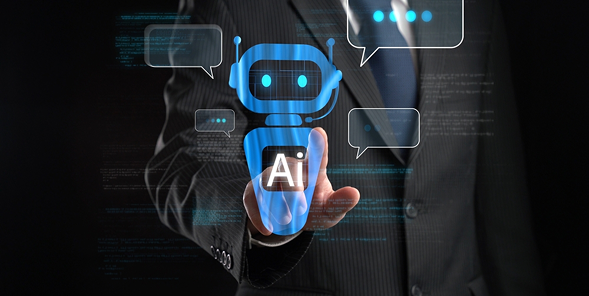

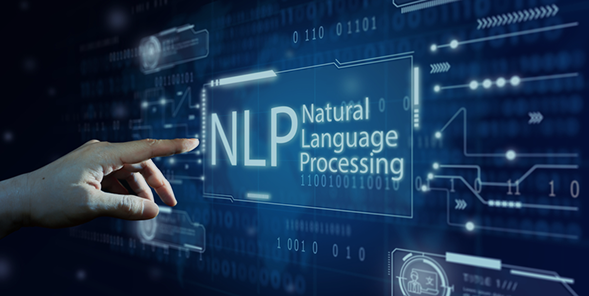
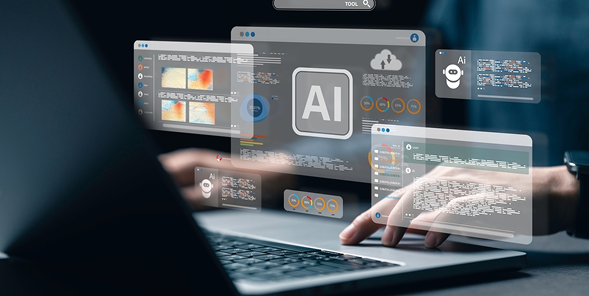

 SaaS Development
SaaS Development Web Application Development
Web Application Development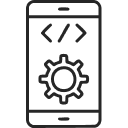 Mobile Application Development
Mobile Application Development Custom Software Development
Custom Software Development Cloud Development
Cloud Development DevOps Development
DevOps Development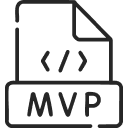 MVP Development
MVP Development Digital Product Development
Digital Product Development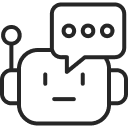 Hire Chatbot Developers
Hire Chatbot Developers Hire Python Developers
Hire Python Developers Hire Django Developers
Hire Django Developers Hire ReactJS Developers
Hire ReactJS Developers Hire AngularJS Developers
Hire AngularJS Developers Hire VueJS Developers
Hire VueJS Developers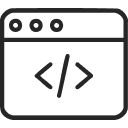 Hire Full Stack Developers
Hire Full Stack Developers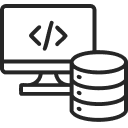 Hire Back End Developers
Hire Back End Developers Hire Front End Developers
Hire Front End Developers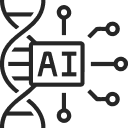 AI Healthcare Software Development & Consulting
AI Healthcare Software Development & Consulting Healthcare App Development
Healthcare App Development EHR Software Development
EHR Software Development Healthcare AI Chatbot Development
Healthcare AI Chatbot Development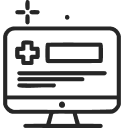 Telemedicine App Development Company
Telemedicine App Development Company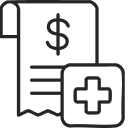 Medical Billing Software Development
Medical Billing Software Development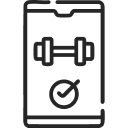 Fitness App Development
Fitness App Development RPM Software Development
RPM Software Development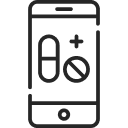 Medicine Delivery App Development
Medicine Delivery App Development Medical Device Software Development
Medical Device Software Development Patient Engagement Software Solutions
Patient Engagement Software Solutions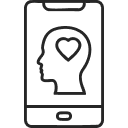 Mental Health App Development
Mental Health App Development Healthcare IT Consulting
Healthcare IT Consulting Healthcare CRM Software Development
Healthcare CRM Software Development Healthcare IT Managed Services
Healthcare IT Managed Services Healthcare Software Testing services
Healthcare Software Testing services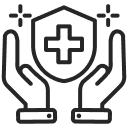 Medical Practice Management Software
Medical Practice Management Software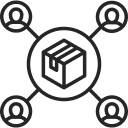 Outsourcing Healthcare IT Services
Outsourcing Healthcare IT Services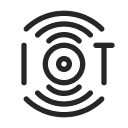 IoT Solutions for Healthcare
IoT Solutions for Healthcare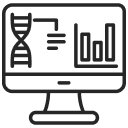 Medical Image Analysis Software Development Services
Medical Image Analysis Software Development Services Lending Software Development Services
Lending Software Development Services Payment Gateway Software Development
Payment Gateway Software Development Accounting Software Development
Accounting Software Development AI-Driven Banking App Development
AI-Driven Banking App Development Insurance Software Development
Insurance Software Development Finance Software Development
Finance Software Development Loan Management Software Development
Loan Management Software Development Decentralized Finance Development Services
Decentralized Finance Development Services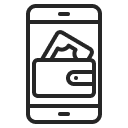 eWallet App Development
eWallet App Development Payment App Development
Payment App Development Money Transfer App Development
Money Transfer App Development Mortgage Software Development
Mortgage Software Development Insurance Fraud Detection Software Development
Insurance Fraud Detection Software Development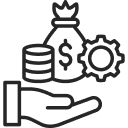 Wealth Management Software Development
Wealth Management Software Development Cryptocurrency Exchange Platform Development
Cryptocurrency Exchange Platform Development Neobank App Development
Neobank App Development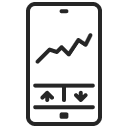 Stock Trading App Development
Stock Trading App Development AML software Development
AML software Development Web3 Wallet Development
Web3 Wallet Development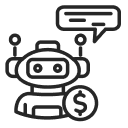 Robo-Advisor App Development
Robo-Advisor App Development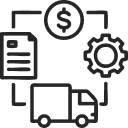 Supply Chain Management Software Development
Supply Chain Management Software Development Fleet Management Software Development
Fleet Management Software Development Warehouse Management Software Development
Warehouse Management Software Development LMS Development
LMS Development Education App Development
Education App Development Inventory Management Software Development
Inventory Management Software Development Property Management Software Development
Property Management Software Development Real Estate CRM Software Development
Real Estate CRM Software Development Real Estate Document Management Software
Real Estate Document Management Software Construction App Development
Construction App Development Construction ERP Software Development
Construction ERP Software Development
